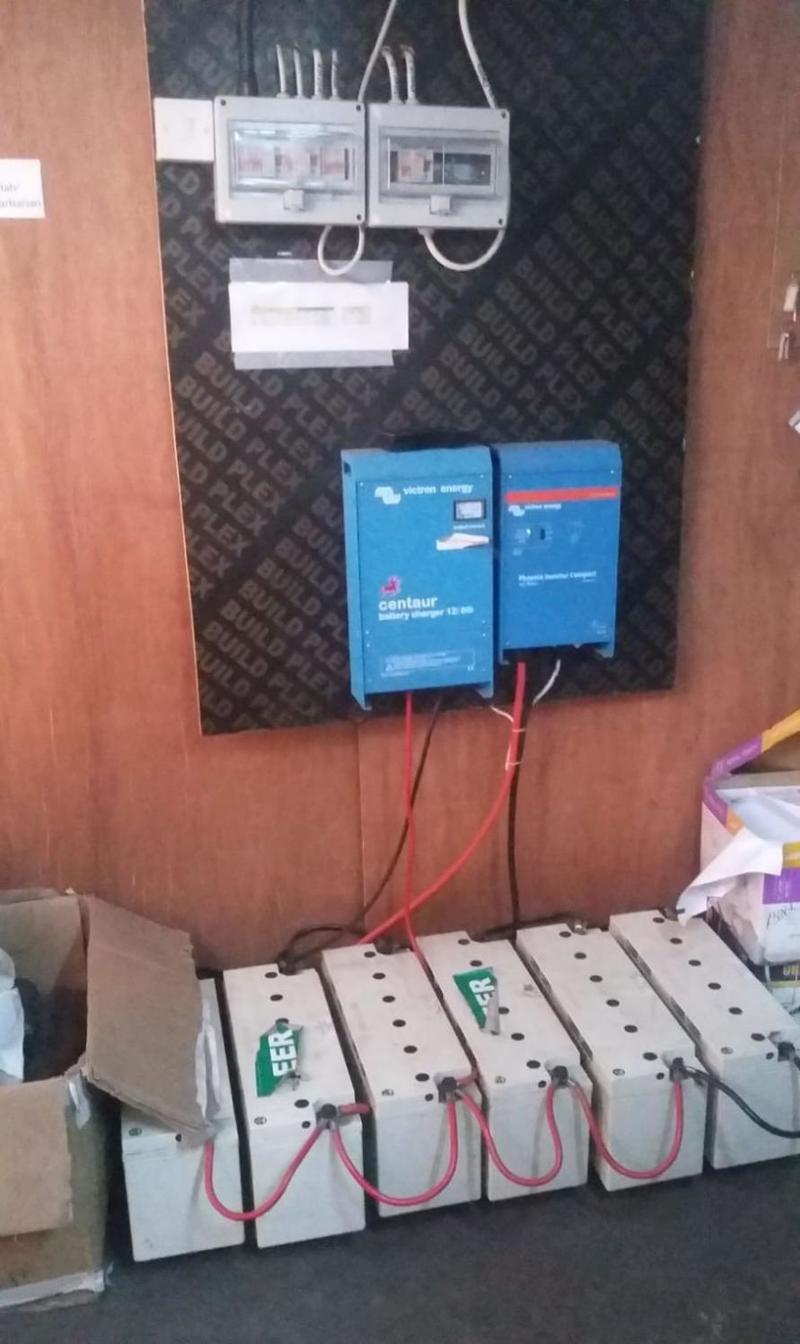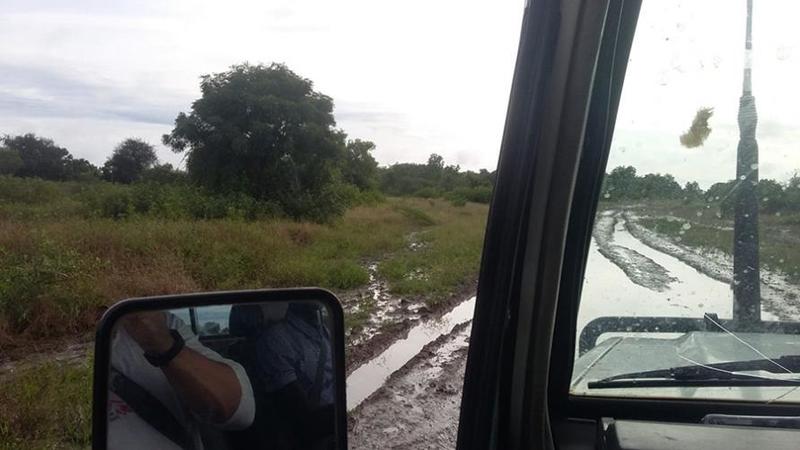The riddle
You have a goat, a wolf and a cabbage and you're on a desert island in the middle of a lake that is about to be flooded.
You need to take all three to the far shore if you are to safely escape the flooding and complete the task. But your boat is (unrealistically) small and unsteady so you can only take one at a time.
The wolf and goat are hungry and if you take the wolf first, the goat will eat the cabbage. Take the cabbage and the wolf eats the goat.
Just when you think you’ve outsmarted the riddle and take the goat to the far bank first, leaving cabbage safe with the uninterested wolf, you realise that you have only delayed the problem and will be faced with the same dilemma on the far bank...
A somewhat annoying brain teaser that most people are familiar with; I have limited skill and even less patience with these. I often miss the (once revealed) obvious “third option” that unlocks the seemingly unsolvable riddle.
However, despite my lack of skill with these abstract scenarios, I have found that life in the field presents similar conundrums on a daily basis, but with very real consequences.
The real-life scenario
There is a young girl who has been in our clinic for a number of days with tuberculosis (TB). Her condition is deteriorating fast.
If she is to have a chance at recovery, she requires more advanced medical care that can only be provided in the MSF clinic in Bentiu, far north of where we are in South Sudan.
The apparently "simple" task of getting the girl the care she needs has been made significantly more complicated by the challenging conditions that are typical of an MSF project:
Our clinic is a start-up and has limited resources to treat complex cases. Due to insecurity, the roads are dangerous and all patient transfers to Bentiu are done via a 20-minute flight. It is the wet season and has been raining heavily for days. All supplies are brought into the project twice weekly via a light aircraft. However, the recent rains have frequently rendered the airstrip unusable, cancelling a number of flights and leaving the project without basics like fresh food.
The young girl requires constant oxygen therapy and her condition quickly deteriorates when oxygen is removed. The project only has two mains-powered oxygen concentrators and neither the light aircraft that would fly her to the clinic, nor the vehicle that would drive her to the airstrip have the power supply necessary to run the concentrators.
The team
As the project logistician, it is my job to make this transfer happen, taking into consideration not only the medical instructions but the environmental constraints and security concerns as well.
As I have said in a previous blog post, a good piece of advice I was given when starting with MSF was that “it doesn't take a genius to point out what we don't have. The challenge is to work out what to do with what we have”.
One thing that originally attracted me to the organisation is that MSF does not parachute international staff unnecessarily into projects, but instead recruits and develops highly skilled and dedicated local staff. This is where I begin my planning.
I approach Rial, the logistics supervisor, Machot, the specialist technician (essentially the projects ‘Jack-of-all trades”) and Thak and Gabriel, the project’s drivers.
Together we begin brainstorming some ideas…
The challenge
We write down the task and constraints and sit down to discuss how to transfer the patient:
- The patient needs to travel to Bentiu for advanced medical care
- Roads are not an option
- The aircraft may be unable to land due to the weather
- The patient requires continuous oxygen therapy
- We are unable to power the oxygen concentrator during the journey
The third option
The trick to the flooded island riddle is not to complete the scenario under the vague outline given, but to think outside the box and to find a hidden "third option": solving the problem without breaking the rules.
Back in the field after much planning and discussion, the team and I identify our own "third option" and settle on a shaky plan:
- Rig-up one of the mains-powered concentrators to a mobile power source so that the patient can travel to the airstrip in the Land Cruiser
- Place an emergency order for a battery-powered oxygen concentrator that will arrive (fully charged) on the flight that will subsequently be used to transfer the patient to Bentiu
The preparations
Of course, with anything in the field, nothing is simple – the child is not the only sick patient in our clinic and we cannot spare the limited batteries or invertors as they are needed to power the other activities, including our very busy maternity department.

To cover this, Rial donates his equipment that had been powering his family's shelter – not only leaving him without even basic lighting but also jeopardising his future business plans, where he intended to use the equipment to power a small cafe once peace and stability return to the area.
This was particularly generous as he knew full well that we could not guarantee that the equipment would even return, let alone what condition it would be in if it did.
With a power supply now sourced, Rial and Machot begin connecting up the concentrator whilst Thak and Gabriel rehearse the transfer to ensure it is done as safely as possible.

The wait
In a few short days, the flight will come.
All being well, not only will the patient be transferred so she can receive the simple yet life-saving treatment she so desperately needs, but we will get a much-needed resupply of medicine, logistics equipment and fresh food!
The next few days pass tensely. The rain continues sporadically, softening the runway.
Thak and I drive to the airstrip regularly to check on the conditions, willing it to dry. We fear the worst.
As Monday night approaches, the day is surprisingly warm. If the rain holds off overnight, we may just be able to land the flight and we might just be able to make the transfer!
I go to bed with a glimmer of hope in my tired mind.
The morning arrives
I wake early to the faint sound of rain splashing against my tent.
My heart sinks. I rush out and the ground is soaked. Whilst only a light drizzle now, it must have been raining throughout the night.
In a fit of denial Thak and I drive to the airstrip as quickly and as safely as we can but the seven-minute journey takes us closer to 40 as we slip and slide across the muddy road, dodging puddles the size of the car.
Although the swamp that was once the road provides fair warning of the conditions we can expect on the runway, my stomach drops through the floor of the Land Cruiser as we pass the final bushes.
Slowly the runway comes into view.
We stop the vehicle in the puddle that was once the airstrip and I get out, sinking up to my boot-laces. I make the call.
“Cancel the flight”
The call
This is one of the hardest calls I have ever had to make.
I knew that working with MSF would be difficult and that I would regularly be in close proximity to death, but I had not expected that it would be me, the logistician and only non-medic in the project, making this life-or-death decision.
The flight is rescheduled and makes a difficult landing the next day, skidding down the still-wet runway and spraying mud across the fuselage.
One pilot comes out shaken, unable to complete a sentence, the other laughing at how even today's comparatively dry conditions were challenging to land in.
Our much-needed supplies finally arrive, as does our fresh food, but I am unable to revel in this victory...
The night before, despite the best efforts of the medical team, our young patient died after 17 days in our dedicated care.
Reflection
I began writing this blog post the day I briefed the medics on the plan for the transfer. The midwife made a passing remark that it was “like one of those leadership problems”.
The comparison to the riddle, seemed to me an interesting starting point, especially combined with what felt like a "classic MSF challenge" where an optimistic team triumphs against impossible odds.
After the child passed, I did not feel it was appropriate to continue writing what now seemed like a flippant blog post. For the longest time, I kept an incomplete draft gathering dust on my laptop – unable to move it to the trash bin.
Whilst I hold a degree of anxiety that the tone I have chosen here may appear disrespectful, I believe my anxiety over deleting this post came from the belief that not to tell this tale would be a far greater disrespect, tantamount to forgetting this little girl simply because she died, and remembering only the living.
I also contemplated re-writing this in a more sombre tone, but I feel that would be disingenuous.
Our patient
In her last days, this little girl was happy and cared for by her mother and well-liked by all the staff.
She laughed a lot and, having never even been in a car before, was extremely excited to go on a plane. She found her mother's fear of flying hilarious.
She would giggle when I practised speaking my Nuer with her as the medics and I explained the process of the transfer to her and her mother.
It had been my birthday not long before and when I stopped by her ward to check the power, I gave her some of the celebratory balloons my colleagues had found for me. She enjoyed playing with these very much. Once I’d run out of balloons, I would give her inflated rubber gloves, which made her laugh a lot.
I wrote this blog post when she was alive and we were trying all we could to make the transfer. Having wrestled time and again with the appropriateness of this piece, I came to the conclusion that not to write this, or to change the tone because she died would be to focus more on her death than her life.
From our video archive:


